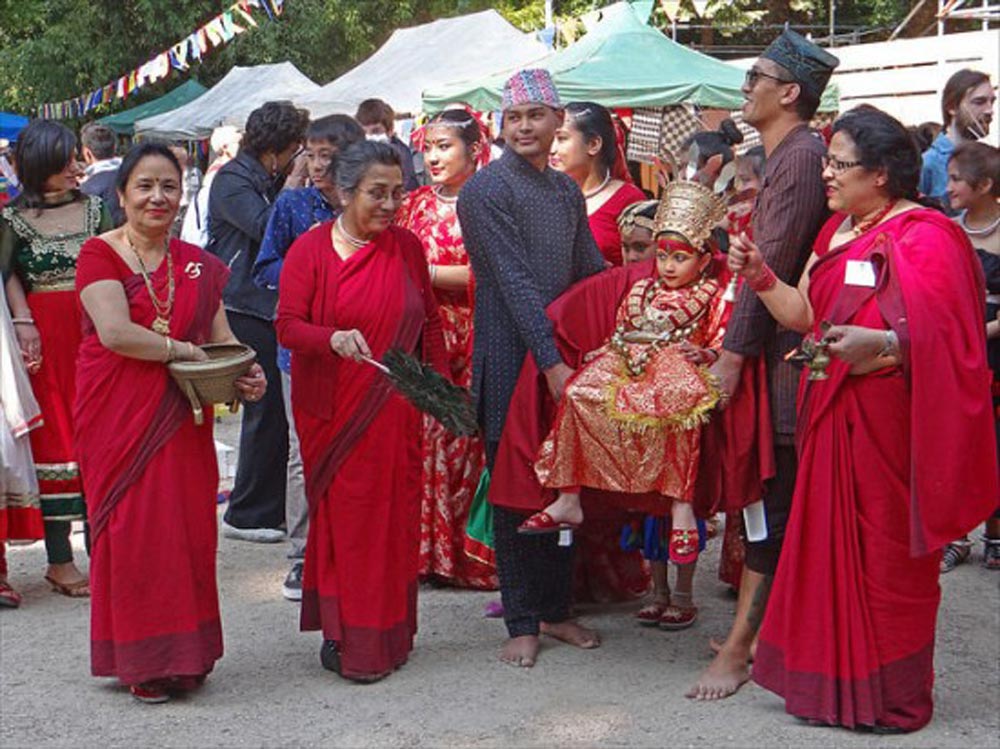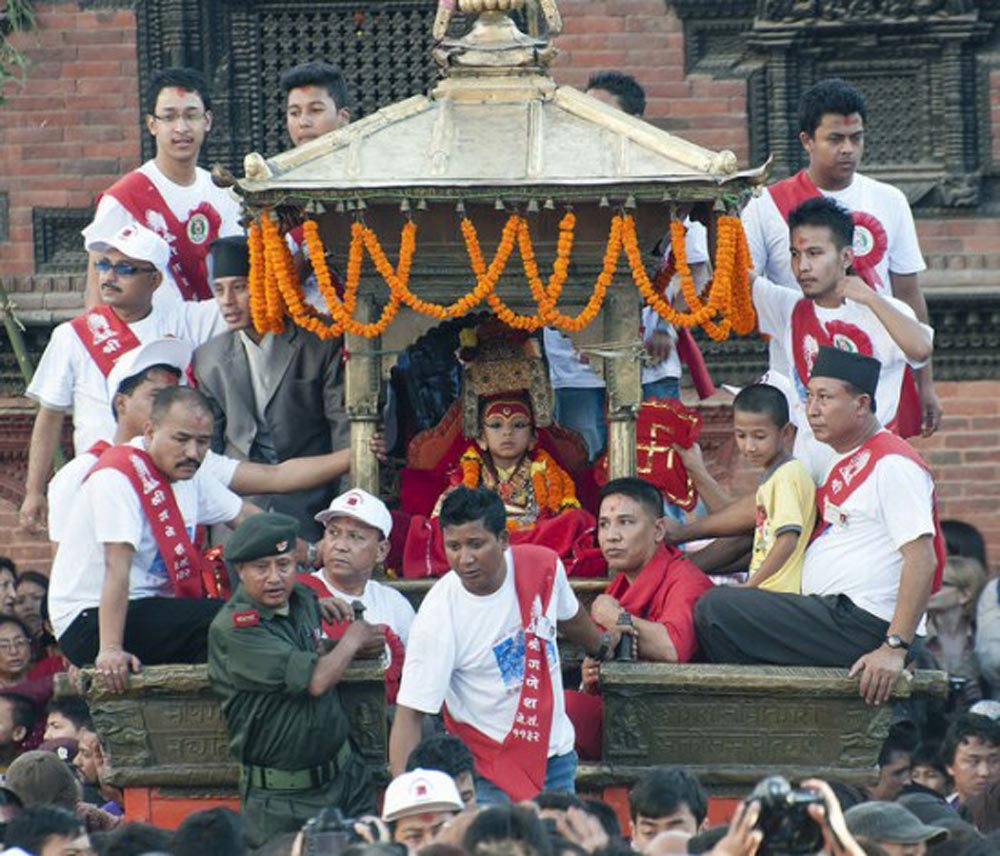Nepal is a land of mysticism, where a select few pre-pubescent girls from the Newar clan are worshiped as ‘Kumari Devi’ or ‘Virgin Goddess’. According to tradition, Durga (the Hindu goddess of destruction) herself is incarnate in young girls belonging to the silver and goldsmith community. Until they attain puberty, Kumaris are worshipped as deities and deemed protectors by thousands of adoring Hindus and Buddhists in Nepal.

To prove that she is the chosen one, a prospective Kumari must go through over 30 tests. Initially, high priests choose girls based on their physical characteristics – with a slender neck like a conch shell, gentle eyes like a cow, and other special traits. In the next stage, the girl must pass through a series of unusual trials. In one test, she is placed in a darkened room with severed animal heads and hideously masked dancing men, while her reaction is observed. In another test, she must correctly identify the items worn by her predecessor (similar to the ritual used in Tibet to choose a new Dalai Lama).
Once a Kumari is selected, she moves out of her home and into the Kumari Bahal, along with her family. Here, she is treated like royalty – she is carefully protected, appearing in public only if an occasion demands it. For these public appearances, she is seated on a traditional throne, as visitors come to pay their respects. Her feet aren’t allowed to touch the ground; she is carried around on chariots or in her caretakers’ arms at all times.

A Kumari has an entirely different lifestyle from that of normal children. She doesn’t attend school, and doesn’t learn to walk until she reaches puberty. Once she begins to menstruate, she goes through a special 12-day ‘Gufa’ ritual, marking the end of her life as a little goddess.
For the ritual, the Kumari is bathed in the Bagmati river in Patan, Nepal. She is then dressed in Traditional Nepali wedding attire, with a cloth covering her face as she is brought outside to worship the sun. After the Gufa ceremony, she retires from the life of a Kumari, meaning she can walk and go to school like any ordinary girl.
When they first return to normal life, Kumaris often have weak legs and find it difficult to walk. Ex-goddess Chanira Bajracharya, 19, said: “It was a challenging transition. I couldn’t even walk properly because I had been carried all the time. The outside world was a complete stranger to me.” Chanira was chosen as the Kumari of Patan City when she was only five years old and retired when she was 15.
Because Kumaris are confined to their houses or temples and subject to strict daily rituals, a few human rights activists consider it to be a form of child labor. They view the ritual as a hindrance to the freedom and education of the child. But in 2008, the Supreme Court overruled a petition against the custom, stating that Kumaris are culturally and religiously significant. The court did order a few reforms though, including education for the girls. St. Xavier school in Patan city does provide a full scholarship to educate any Kumari during her reign.

Despite the difficulties that Chanira faced while returning to normal life, she believes that her former life was blessed. “Being a Kumari was a matter of great pride and respect for me and my family,” she said. She also believes that the identity of a respectable female force with divine energy should be perceived as something beyond religion. “Nepal is primarily a male-dominated society, but here’s a girl worshiped and revered as a goddess. As a woman, I got that respect. And the same message should be conveyed in society – that women should be respected and not dominated.”






